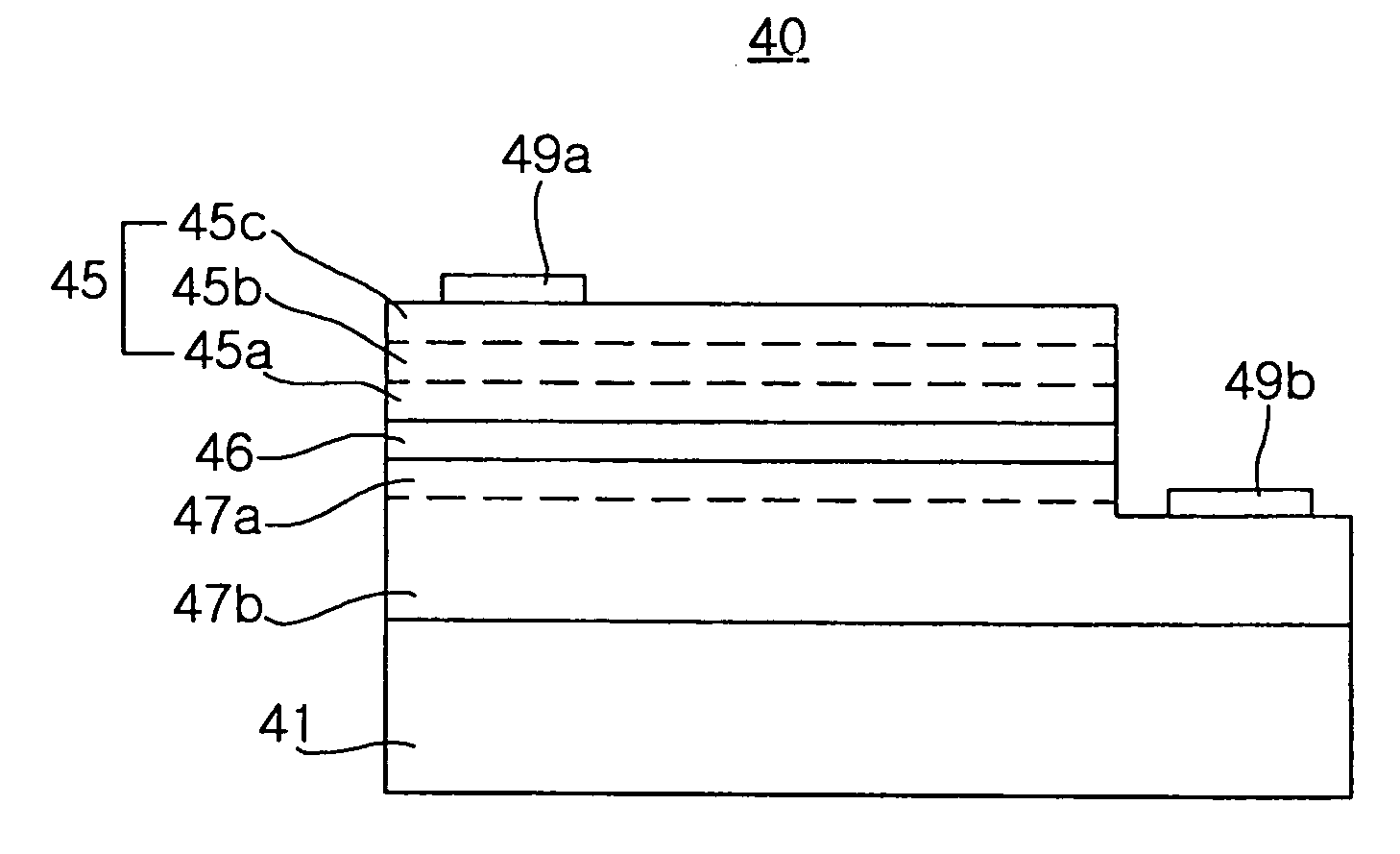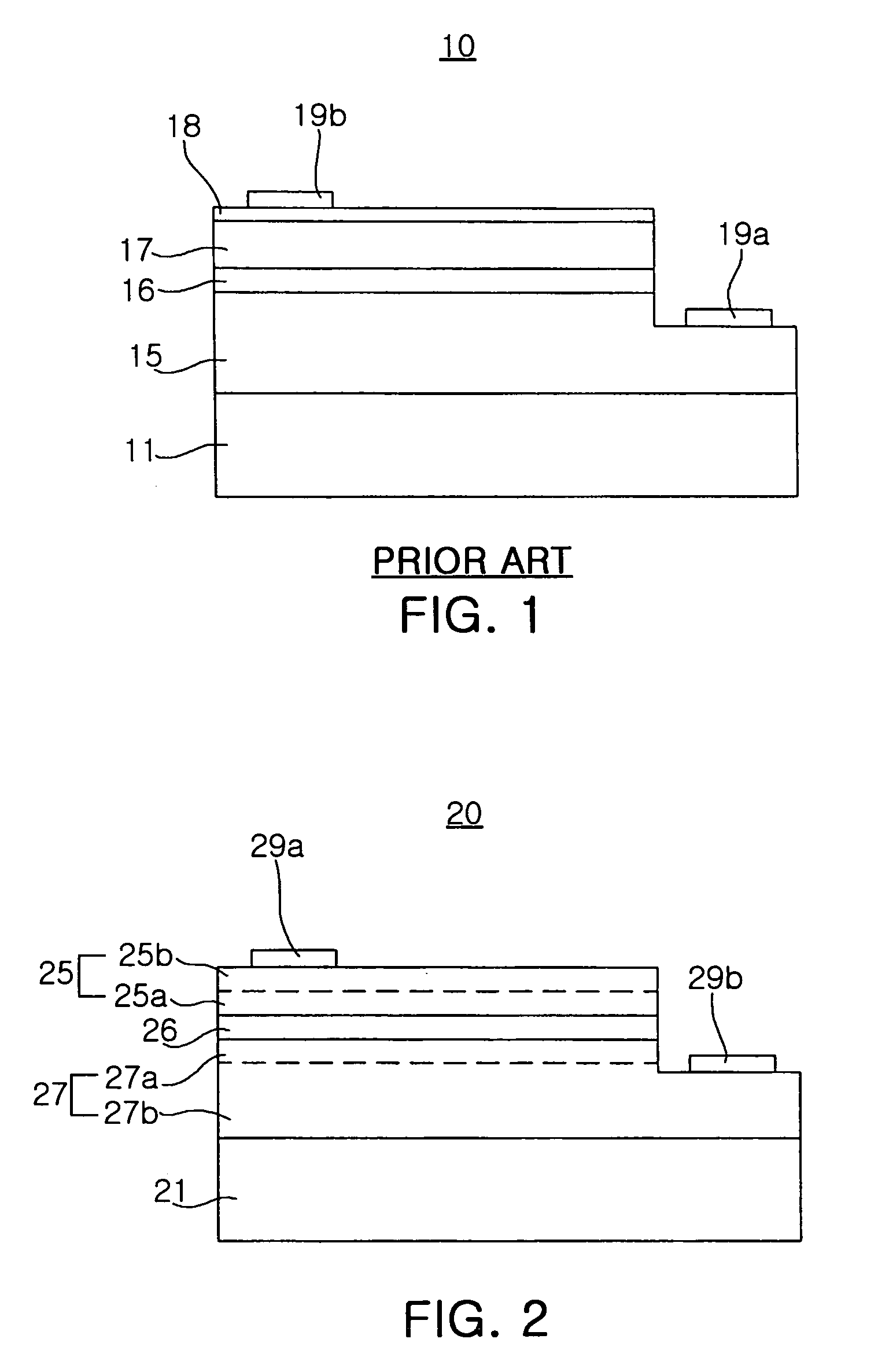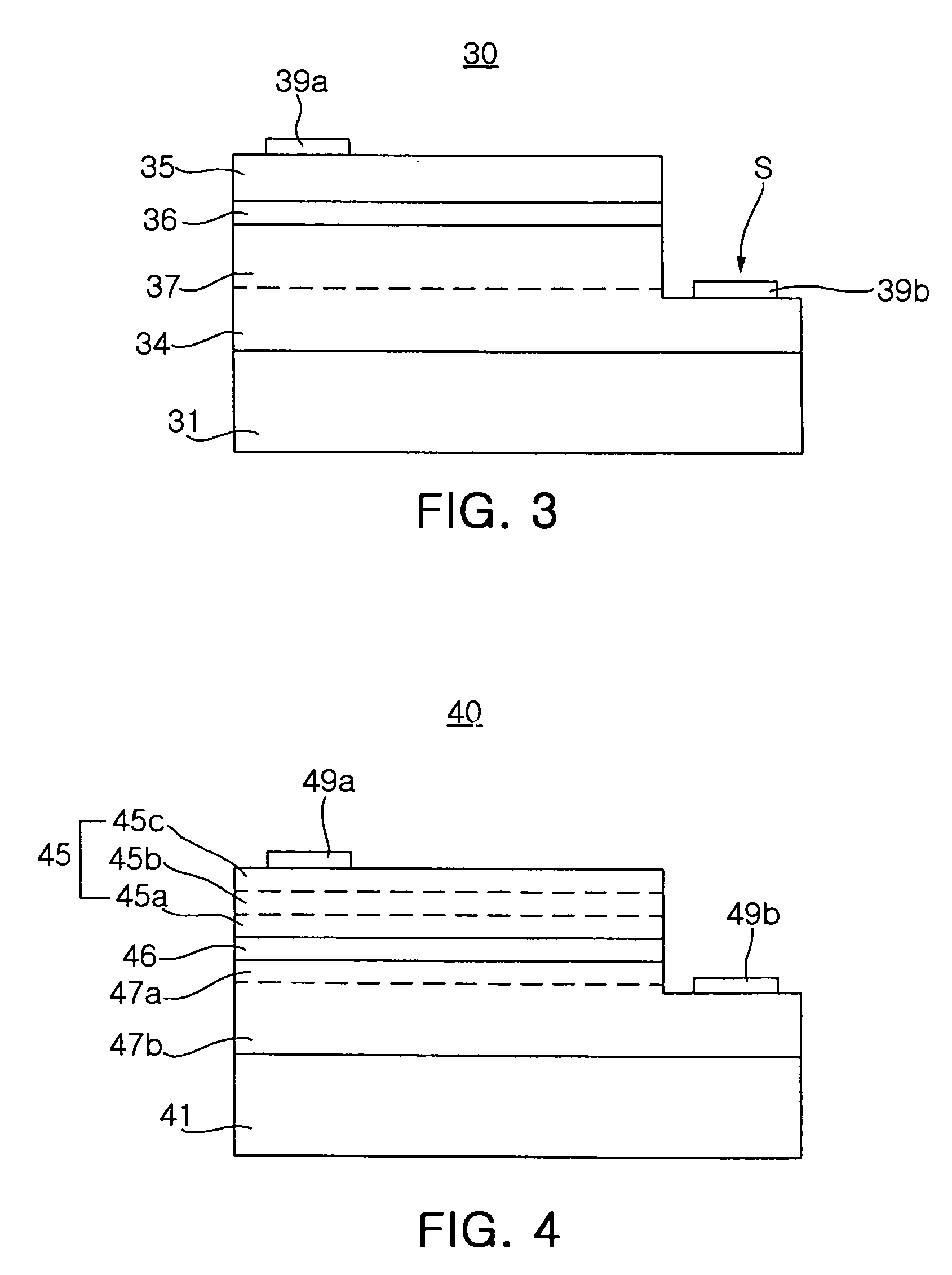Process for producing nitride semiconductor light-emitting device
- Summary
- Abstract
- Description
- Claims
- Application Information
AI Technical Summary
Benefits of technology
Problems solved by technology
Method used
Image
Examples
Embodiment Construction
[0040] Preferred embodiments of the present invention will now be described in detail with reference to the annexed drawings. FIG. 2 is a cross-sectional side view of a nitride semiconductor light-emitting device 20 according to one embodiment of the present invention.
[0041] As shown in FIG. 2, the nitride semiconductor light-emitting device 20 includes a sapphire substrate 21, and a p-type nitride semiconductor layer 27, an active layer 26 and an n-type nitride semiconductor layer 25, these layers being formed sequentially on the sapphire substrate 21. Further, in order to improve a lattice matching of the p-type nitride semiconductor layer 27 with the sapphire substrate 21, a buffer layer may be formed thereon prior to growth of the p-type nitride semiconductor layer 27. As the buffer layer, a low temperature nucleus-growth layer made of a formula AlxInyGa1−(x+y)N (0≦x, y≦1) material may be used.
[0042] Referring now to FIG. 2, a process for producing the nitride semiconductor li...
PUM
| Property | Measurement | Unit |
|---|---|---|
| Temperature | aaaaa | aaaaa |
| Electrical conductor | aaaaa | aaaaa |
| Semiconductor properties | aaaaa | aaaaa |
Abstract
Description
Claims
Application Information
 Login to View More
Login to View More - R&D
- Intellectual Property
- Life Sciences
- Materials
- Tech Scout
- Unparalleled Data Quality
- Higher Quality Content
- 60% Fewer Hallucinations
Browse by: Latest US Patents, China's latest patents, Technical Efficacy Thesaurus, Application Domain, Technology Topic, Popular Technical Reports.
© 2025 PatSnap. All rights reserved.Legal|Privacy policy|Modern Slavery Act Transparency Statement|Sitemap|About US| Contact US: help@patsnap.com



